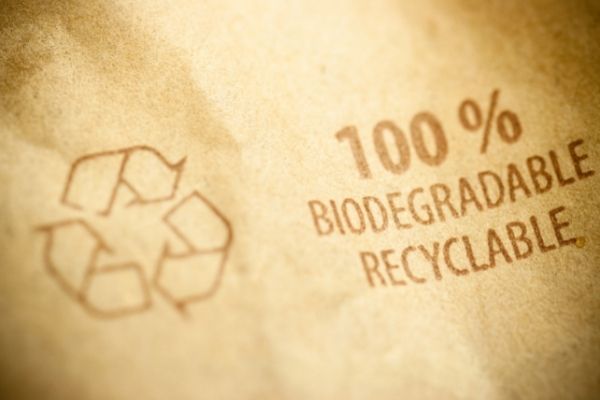To help solve the world’s plastic crisis, many companies are shifting to biodegradable plastic options. But are they as green as they are made out to be? What does biodegradable mean, and is it actually a good thing for the environment?
As we strive for a greener, safer alternative to much of the plastic we use today, finding alternatives can have risks also. We need to learn about these new materials and understand how they can and cannot be used instead of jumping straight in and substituting them for what we currently use.
There are many misconceptions regarding biodegradable plastics. Below we take you through the basic definition of biodegradable, give you some examples.
We also provide some tips on how to decide if biodegradable products are the right choice.
What does biodegradable mean?
The definition of biodegradable in the dictionary is “capable of being broken down into harmless products through the action of living things, like microorganisms”, see Merriam Webster Dictionary.
Biodegradable refers to the process where materials are broken down into their original components, more commonly carbon, nitrogen, and oxygen. These components can then return to the soil or water as nutrients. At least that is the preferred way! Unfortunately, some materials break down into harmful toxic components that can pollute the environment.
For the process to occur, materials need to be exposed to microorganisms, bacteria, or fungi.
Whether an object will biodegrade or not depends on a number of factors. These include what the material is made from and is it food for microorganisms. It also depends on what sort of conditions exist where the item has been disposed of. Conditions that can affect the biodegradation process include temperature, light, water, and oxygen. The amount of exposure to these different elements can increase or decrease the time it takes for materials to biodegrade.
What is the definition of compostable?
Compostable refers to organic waste that can be made into compost, a mixture of decayed organic matter and soil that is used as a fertilizer. Composting is a form of biodegradation; however, it requires specific conditions to break the material down, and the process must work quickly. According to the ASTM (American Society for Testing and Materials), materials in a composting facility should disintegrate within 12 weeks, and at least 90% of the material should biodegrade within 180 days. What remains should be biomass, water, and carbon dioxide, with no harmful or toxic materials.
There are two types of composting processes: industrial composting systems and home composting systems. If you run your own home composting, be sure to research the compostable items that you can put in your system. Many compostable materials only do so in certain conditions, often temperatures or conditions only achieved through industrial composting, and so these materials cannot be composted at home. It is best to look for home compostable on the label or do some research.
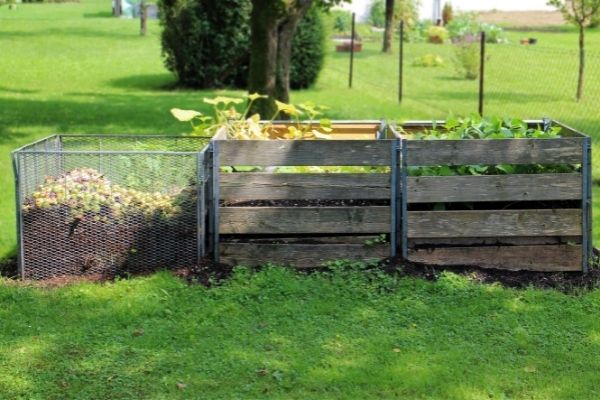
What is the difference between biodegradable and compostable?
It is important to understand that biodegradable doesn’t always equal compostable. Biodegradable materials are not necessarily able to be composted. The definition of biodegradable is that a material can be broken down into non-toxic products by the action of microorganisms. The difference between biodegradable and compostable is that a compostable material will biodegrade or break down in a short time and will not produce any harmful residues.
If the material is compostable and biodegradable, it will break down at a faster rate and will not produce any harmful residues.
What are Examples of Biodegradable Items
Examples of items that are inherently biodegradable include food waste and similar organic materials. For other products and materials, it’s not quite as simple to determine if they are biodegradable. Below we provide some examples.
Items that are biodegradable include:
- Food Waste
- coffee grounds
- Garden waste
- untreated wood
- cardboard
- untreated wood
- paper products like newspapers, junk mail. and serviettes, tissues, and toilet paper
- Natural fabrics like cotton, jute, linen, wool, or silk fabric. Only those that have not been chemically treated or blended with other fabrics like polyester.
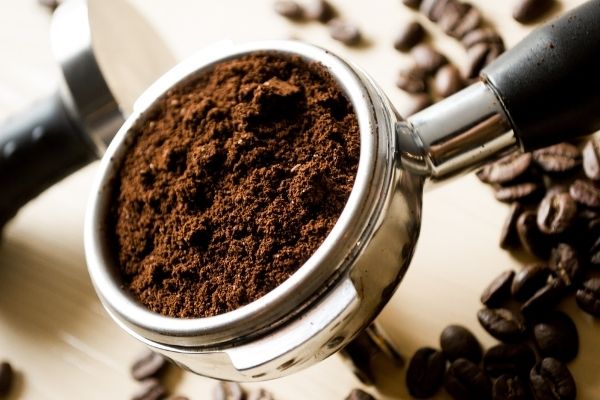
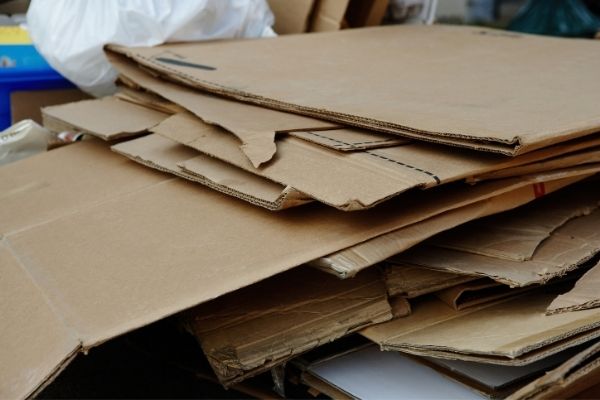
Products made from non-biodegradable materials
- Wood that has been chemically treated
- Multilayered materials like milk and juice tetra paks
- Paper products and other materials that have been chemically treated
- Paper coated in plastic or aluminum
- Fabrics like polyester and nylon
- Plastic bottles
- Glass bottles
- Plastic take away food containers like Styrofoam
- Aluminum cans and foil
- Plastic straws
- Most plastic packaging and products.
- Cigarette butts
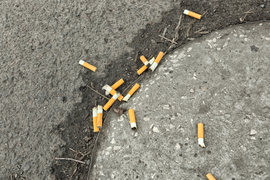
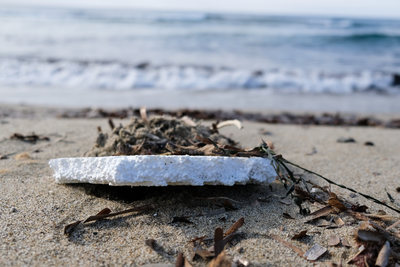
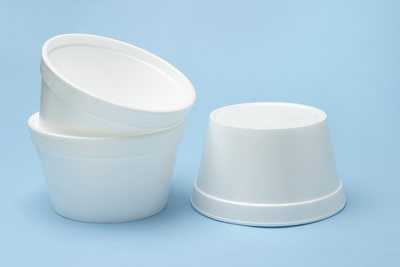

Do plastics biodegrade?
Plastics do not generally biodegrade, but they can degrade. This means they will break down into smaller pieces when exposed to sunlight, moisture, and oxygen. This process tends to be very slow; however, when it happens, it creates what we refer to as microplastics and nanoplastics. They also take a very long time to degrade. A styrofoam cup or a plastic bottle can take up to 500 years to degrade.
Although some plastics are being developed that are biodegradable, most plastics we encounter in our lives do not biodegrade. As described above, the term “biodegrade” refers to a process in which a material is broken down into its base components by microorganisms, bacteria, or fungi. These organisms must break the bonds that hold the materials together.
These organisms have developed processes over many billions of years to attach particular types of bonds. As Kenneth Peters from Stanford University explained in his interview with Life’s Little Mysteries, they have learned to attack only certain types of bonds commonly found in nature. The artificial bonds of plastic polymers are not recognizable to these organisms, so they cannot process them. As a result, most petroleum-based plastics do not readily biodegrade and can persist in the environment for decades or centuries, depending on the type.
Plastics designed specifically to biodegrade will do so. However, even these biodegradable plastics only do so in certain conditions like commercial composting facilities. Biodegradable plastics can eventually break down in the environment, but the process will be slower than in the specific conditions they were designed.
How are biodegradable plastics made?
Biodegradable plastics are generally made from plant-based renewable materials such as bamboo, sugarcane, or cornstarch instead of fossil fuels.
Some examples of bio-plastics include polylactic acid (PLA), a starch-based polymer making up about half of the biodegradable plastics, polybutylene succinate (PBS), or polyhydroxyalkanoates (PHA’s). These materials all required industrial composters to break them down. These plastics are referred to as bio-plastics.
There is a great deal to learn about bioplastics, something we will address in a future article.
Are biodegradable products good for the environment?
The answer to this question is not all straightforward. It depends on a lot of factors. In some situations, biodegradable can be good for the environment, but it can be harmful in others.
Naturally biodegradable material like food waste or organic material can biodegrade without causing pollution and may actually improve the surrounding environment, like compost adding nutrients to the oil.
The problem is that many biodegradable materials can be harmful when they break down—leaving nasty chemicals or toxins in the environment. For example, biodegradable plastics or other types of material can have harmful chemical additives which can pollute the environment when they break down. As discussed above, some materials, despite being labeled biodegradable, will only biodegrade in certain conditions, often in commercial composting systems.
Many biodegradable materials are not disposed of correctly and end up in landfills. When sent to landfills, these materials and, in fact, even some organic materials like food waste form gases like methane and carbon dioxide. Although these gases can be used to generate energy they often escape into the atmosphere before being captured.
Materials can also be completely buried in landfills, slowing down the biodegradation process significantly. Researchers at the International Marine Litter Research Unit were able to demonstrate the issue well. They buried a biodegradable plastic bag in soil for three years, after which it was still able to carry a full load of shopping. Whereas in open air or the marine environment, the bag completely disappeared for nine months and three months consecutively. Read more here.
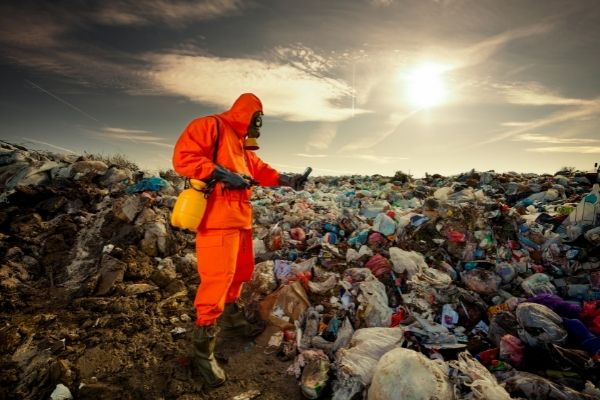
Labeling of biodegradable and compostable products?
There are several standards that lay out the requirements for biodegradable labeling. Here are a few:
The European Commission standards
The European Commission developed the globally known standards, European EN 13432, which defines the minimum requirements for biodegradable and compostable packaging, and European Standard EN 14995, defining the requirements for non-packaging plastic. To meet the standards to be labeled industrial compostable, a product must fully biodegrade in an industrial composting plant under controlled conditions, including temperature and moisture, within a specific time frame. It must also leave nothing behind but water, biomass, and CO2. You can read more about the standard here. Products that are certified to meet the requirements of EN 13432 can be labeled with the Seedling logo, a registered trademark owned by European Bioplastics. You might recognize this logo below. Note the logo must show “compostable” and should also show a valid registration number.

American Society for Testing and Materials
The American Society for Testing and Materials (ASTM International) also defines biodegradable packaging and products. For a plastic to be classed as biodegradable by the ASTM, 60 percent of it must break down within 180 days in a commercial composting facility.
ASTM Standards D6400 and D6868 outline the specifications that must be met in order to label a plastic as commercially “compostable”.
What Can You do?
It is a tricky business sorting out biodegradable and compostable materials. Many of these materials cannot be composted at home and must be sent to a commercial composting facility. These materials also do not belong in a recycling system. They are not compatible with regular plastics that are processed through recycling facilities and can lead to contamination.
The best thing you can do is stay informed, ask questions and be curious.
Below are some helpful tips.
Reduce first if you can
Of course, the best action is to reduce first. It’s a good practice always to question whether you need to purchase an item packaged in or made from plastic. Are there any alternatives? Can you make it? Borrow it? Or get it second-hand? Do you really need a new one, or can you keep using the old one? You can get loads more ideas from our article Reduce, Reuse, Recycle. Ways to get you thinking.
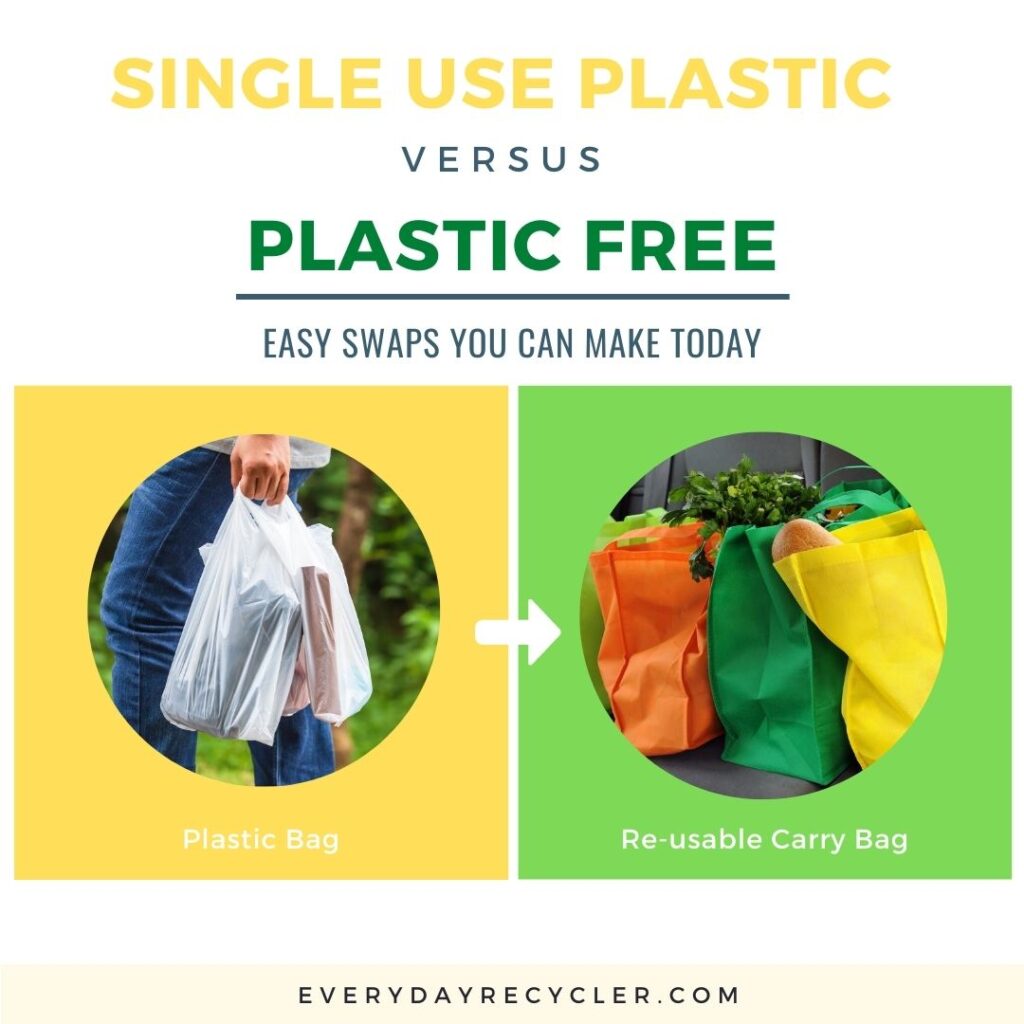
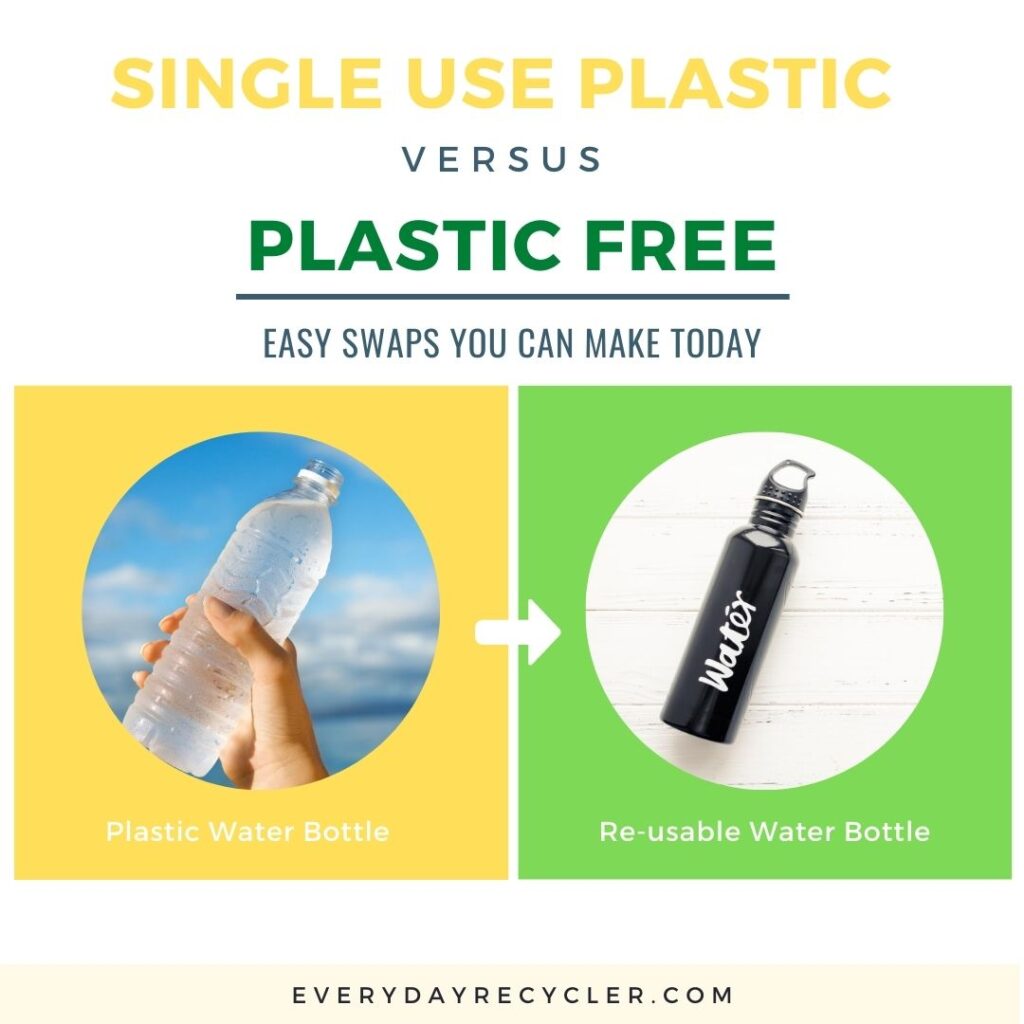

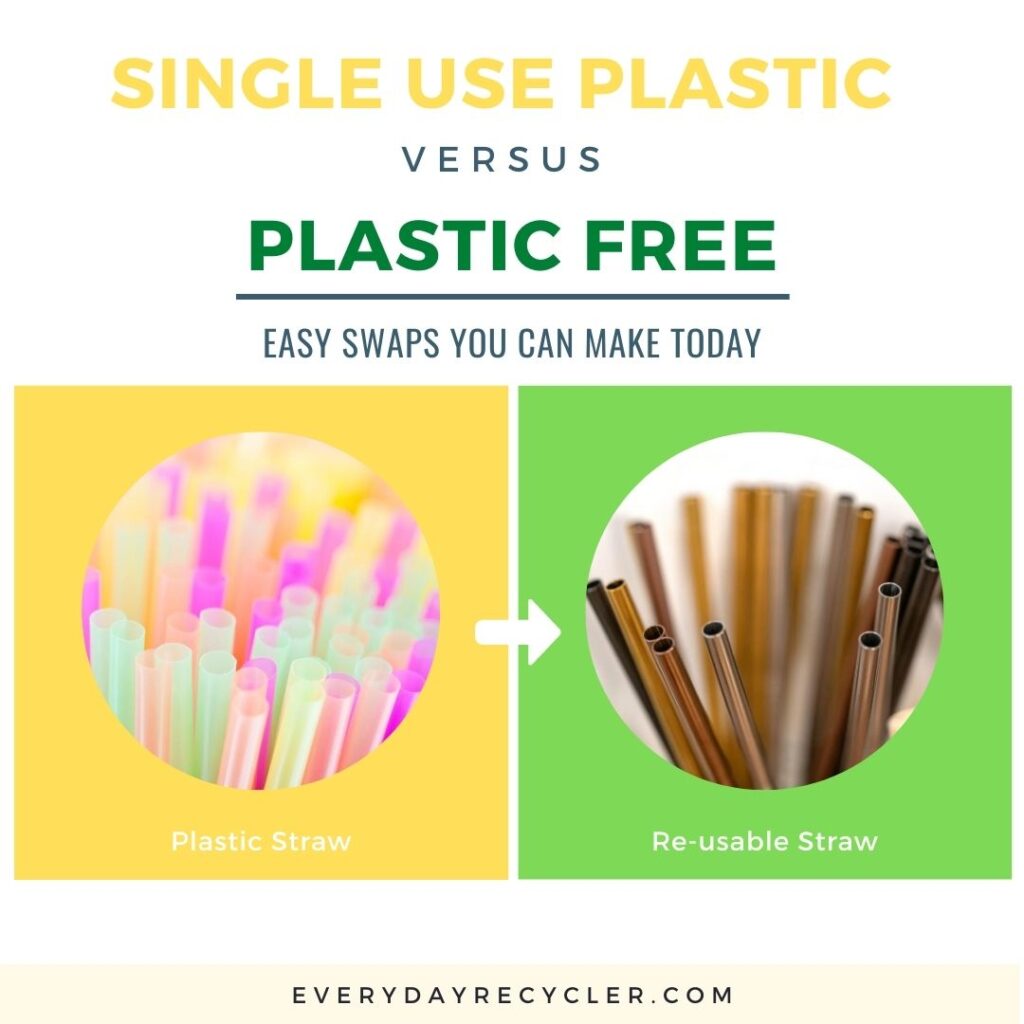
Can you recycle biodegradable materials?
Biodegradable materials cannot be recycled through conventional recycling services such as your curbside recycling bin. They will contaminate the recycling stream and possibly result in the whole batch being sent to landfill.
Can you compost biodegradable materials?
It depends on the type of material and what sort of composting facility you are referring to. Biodegradable does not always mean compostable, but all compostable materials are biodegradable.
If you have a home composting set up, do your research and check if the item is accepted. If you are using a commercial composting service, they will generally provide you with a list of acceptable and non-acceptable items.
Should I avoid biodegradable plastics?
Avoiding biodegradable plastics all together may not be necessary. However, be aware that the regulations for labeling an item biodegradable vary and, in some cases, are not adhered to. You need to be aware and do some research when you are purchasing products claiming to be biodegradable.
Here are some tips:
- Look at the labeling and make sure it is trustworthy, for example, does it use a label standardized label such as the Seedling label, and if so do they include a valid registration number.
- Check if they provide details about what the product is made from and look for the type of materials you would find in nature.
- Does the label describe in more detail how the material must be treated? For example, does it state that it can only be composted in an industrial facility? If so do you have access to one of these facilities through your local authority? If you don’t then it will need to go in the trash so you might be better choosing a recyclable plastic. If it is not clear then avoiding is best or you could try contacting the company to find out more.
What else can I do?
Learn how to recycle to ensure non-biodegradable materials like plastic don’t end up in landfill. Look into setting up your own at-home composting system to reduce the amount of organic material that you send to landfill. Be sure the check what can and cannot be composted in an at-home composting system.
Learn more about recycling?
- What are the plastic numbers and how to recycle them
- How to recycle your soft plastics
- Glass recycling
- Recycled paper and cardboard
The plastic waste problem may not be easily solved by swapping to biodegradable plastics. To make good choices and be better recyclers understanding what biodegradable and compostable mean is important.
Biodegradable is where materials break down into their original components, more commonly carbon, nitrogen, and oxygen, by introducing microorganisms, bacteria, or fungi. Compostable is a form of biodegradation where the waste that biodegrades can be made into compost, a mixture of decayed organic matter and soil. Composting happens faster and does not create any harmful toxins.
Most municipal waste systems are not set up to handle biodegradable or compostable materials, and very few households have access to commercial composting facilities. You cannot put biodegradable packaging or other materials into your regular recycling bin. They either need to be sent to an industrial composting facility, composted at home (only in certain circumstances) or thrown in the trash can.
Biodegradable materials are not always better for the environment. Naturally biodegradable items like food waste biodegrade without causing pollution and may improve the surrounding environment. However, biodegradable plastics can leach nasty chemicals into the environment. Plus, many of these items do not biodegrade when they are sent to landfill.
We have quite a way to go, and the systems we see today are certainly not perfect, but they are heading in the right direction. There are a lot of things you can do to help. Learn what you can, make good choices, refuse or reduce and treat your waste with respect by understanding what to do with it and sending it to the right place.
Sources
- Natalie Wolchover, 2011, Why Doesn’t Plastic Biodegrade?
- Plasticsmakeitpossible.com, 2015, Are Plastics Biodegradable?
- EPA, Frequently Asked Questions about Plastic Recycling and Composting
- Alan Williams, 2019, Biodegradable bags can hold a full load of shopping three years after being discarded in the environment
- Kelly Oakes, 2019, Why biodegradables won’t solve the plastic crisis
- European Bioplastics, 2015, Certified Bioplastics,
- Kathy Hunt, Standards for Biodegradable Plastics


